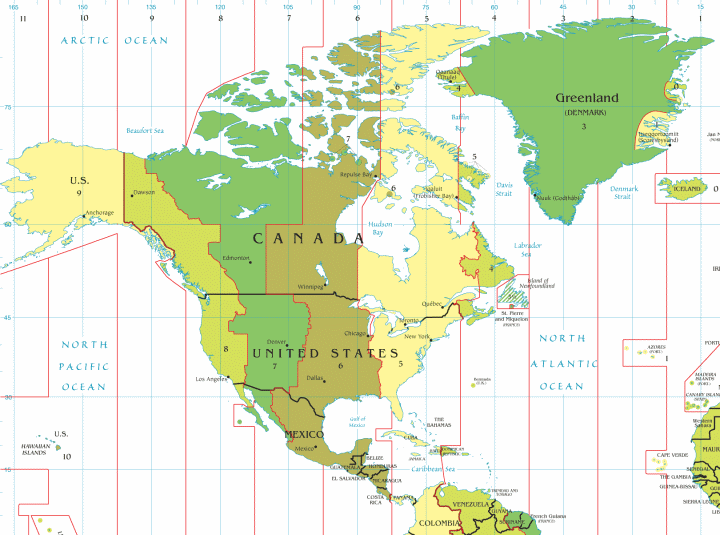
That suggests in effect, Americans already live on two time zones. Research based on time use surveys found American’s schedules are determined by television more than daylight. And for what purpose? If everyone functions an hour earlier anyway, in part to coordinate with other parts of the country, the different time zones lose meaning and are reduced to an arbitrary inconvenience.
Time zones america tv#
instead of 7 p.m., and even the TV schedule was an hour earlier.īut for the last three years I lived in a state of constant confusion, I rarely knew the time and was perpetually an hour late or early. instead of 9 a.m., restaurants were packed at 6 p.m. I found that in Austin, everyone did things at the same times they do them in New York, despite the difference in time zone. I spent the last three years commuting between New York and Austin, living on both Eastern and Central time.


Why stick with a system designed for commerce in 1883?Īmerica already functions on fewer than four time zones. Now the world has evolved further-we are even more integrated and mobile, suggesting we’d benefit from fewer, more stable time zones. There are now 24 (or 25, depending on your existential view of the international date line) time zones, each taking about 15 degrees of longitude. The following year, at the International Meridian Conference, it was decided that the entire world could coordinate time keeping based on the British Prime Meridian (except for France, which claimed the Prime Meridian ran through Paris until 1911). Railroads operated with 100 different time zones before America moved to four, which was consistent with Britain’s push for a global time standard. This made operations very difficult for the telegraph and burgeoning railroad industry. That led to more than 300 different American time zones. Before that, each city had its own time standard based on its calculation of apparent solar time (when the sun is directly over-head at noon) using sundials. According to Time and Date, a Norwegian newsletter dedicated to time zone information, America started using four time zones in 1883. How we measure time has always evolved with the needs of commerce. The purpose of uniform time measures is coordination. Anyone who lives on one coast and does business with the other can imagine the uncountable benefits of living in a two-time-zone nation (excluding Alaska and Hawaii). The east and west coasts will only be one hour apart. This will result in just two time zones for the continental United States. After that we won’t change our clocks again-no more daylight saving. This year, Americans on Eastern Standard Time should set their clocks back one hour (like normal), Americans on Central and Rocky Mountain time do nothing, and Americans on Pacific time should set their clocks forward one hour.

I propose we not only end Daylight Saving, but also take it one step further. Being out of sync with European time changes was at one point projected to cost the airline industry $147 million a year in travel disruptions. There’s evidence that regularly changing sleep cycles, associated with daylight saving, lowers productivity and increases heart attacks. Frequent and uncoordinated time changes cause confusion, undermining economic efficiency.

The actual energy savings are minimal, if they exist at all. It would seem to be more efficient to do away with the practice altogether. It also creates confusion because countries that observe daylight saving change their clocks on different days. The fall time-change feels particularly hard because people lose another hour of evening daylight, right around the time the days are growing shorter anyway. It’s a controversial practice that became popular in the 1970s with the intent of conserving energy. Daylight Saving Time has ended once again, setting off an annual ritual in which Americans (except for those who live in Arizona or Hawaii) and residents of 78 other countries-including Canada (but not Saskatchewan), most of Europe, Australia and New Zealand-turn their clocks back one hour.


 0 kommentar(er)
0 kommentar(er)
